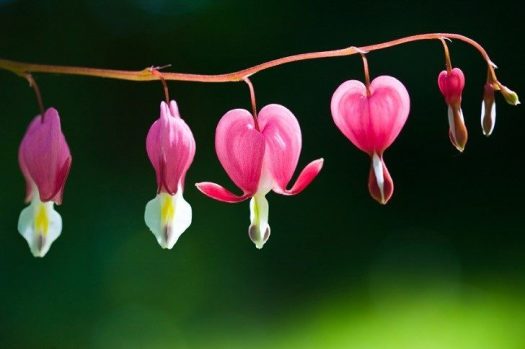
Plants are mainly multicellular, predominantly photosynthetic eukaryotes of the kingdom Plantae. The term is today generally limited to the green plants, which form an unranked clade Viridiplantae (Latin for “green plants”). This includes the flowering plants, conifers and other gymnosperms, ferns, clubmosses, hornworts, liverworts, mossesand the green algae, and excludes the red and brown algae. Historically, plants formed one of two kingdoms covering all living things that were not animals, and both algaeand fungi were treated as plants; however all current definitions of “plant” exclude the fungi and some algae, as well as the prokaryotes (the archaea and bacteria).
Green plants have cell walls containing cellulose and obtain most of their energy from sunlight via photosynthesis by primary chloroplasts, derived from endosymbiosis with cyanobacteria. Their chloroplasts contain chlorophylls a and b, which gives them their green color. Some plants are parasitic and have lost the ability to produce normal amounts of chlorophyll or to photosynthesize. Plants are characterized by sexual reproduction and alternation of generations, although asexual reproduction is also common.
There are about 300–315 thousand species of plants, of which the great majority, some 260–290 thousand, are seed plants (see the table below). Green plants provide a substantial proportion of the world’s molecular oxygen and are the basis of most of Earth’s ecologies, especially on land. Plants that produce grains, fruits and vegetablesform humankind’s basic foodstuffs, and have been domesticated for millennia. Plants play many roles in culture. They are used as ornaments and, until recently and in great variety, they have served as the source of most medicines and drugs. The scientific study of plants is known as botany, a branch of biology.

Plants are one of the two groups into which all living things were traditionally divided; the other is animals. The division goes back at least as far as Aristotle (384 BC – 322 BC), who distinguished between plants, which generally do not move, and animals, which often are mobile to catch their food. Much later, when Linnaeus (1707–1778) created the basis of the modern system of scientific classification, these two groups became the kingdoms Vegetabilia (later Metaphyta or Plantae) and Animalia (also called Metazoa). Since then, it has become clear that the plant kingdom as originally defined included several unrelated groups, and the fungi and several groups of algae were removed to new kingdoms. However, these organisms are still often considered plants, particularly in popular contexts.
Outside of formal scientific contexts, the term “plant” implies an association with certain traits, such as being multicellular, possessing cellulose, and having the ability to carry out photosynthesis.

Characteristics of plants
- They are multicellular and eukaryotic organisms.
- Plants can make their own food in their chloroplast by using solar energy.They do not depend on other organisms for feeding.
- Plants cannot move(nomotile).
- All plants are covered by a rigid cell wall which provides support.
- Many plants continue to grow throughout their live.
- They have a few types of organs;there are no real systems.
- Their responses to stimuli are slow and limited.
- They may reproduce asexually and sexually.
Evolution
The evolution of plants has resulted in increasing levels of complexity, from the earliest algal mats, through bryophytes, lycopods, ferns to the complex gymnospermsand angiosperms of today. Plants in all of these groups continue to thrive, especially in the environments in which they evolved.

An algal scum formed on the land 1,200 million years ago, but it was not until the Ordovician Period, around 450 million years ago, that land plants appeared. However, new evidence from the study of carbon isotope ratios in Precambrian rocks has suggested that complex photosynthetic plants developed on the earth over 1000 m.y.a. For more than a century it has been assumed that the ancestors of land plants evolved in aquatic environments and then adapted to a life on land, an idea usually credited to botanist Frederick Orpen Bower in his 1908 book “The Origin of a Land Flora”. A recent alternative view, supported by genetic evidence, is that they evolved from terrestrial single-celled algae.

Primitive land plants began to diversify in the late Silurian Period, around 420 million years ago, and the fruits of their diversification are displayed in remarkable detail in an early Devonian fossil assemblage from the Rhynie chert.This chert preserved early plants in cellular detail, petrified in volcanic springs. By the middle of the Devonian Period most of the features recognised in plants today are present, including roots, leaves and secondary wood, and by late Devonian times seeds had evolved. Late Devonian plants had thereby reached a degree of sophistication that allowed them to form forests of tall trees. Evolutionary innovation continued after the Devonian period. Most plant groups were relatively unscathed by the Permo-Triassic extinction event, although the structures of communities changed.
This may have set the scene for the evolution of flowering plants in the Triassic (~200 million years ago), which exploded in the Cretaceous and Tertiary. The latest major group of plants to evolve were the grasses, which became important in the mid Tertiary, from around 40 million years ago. The grasses, as well as many other groups, evolved new mechanisms of metabolism to survive the low CO2 and warm, dry conditions of the tropics over the last 10 million years.
A 1997 proposed phylogenetic tree of Plantae, after Kenrick and Crane, is as follows, with modification to the Pteridophyta from Smith et al. The Prasinophyceaeare a paraphyletic assemblage of early diverging green algal lineages, but are treated as a group outside the Chlorophyta: later authors have not followed this suggestion.
